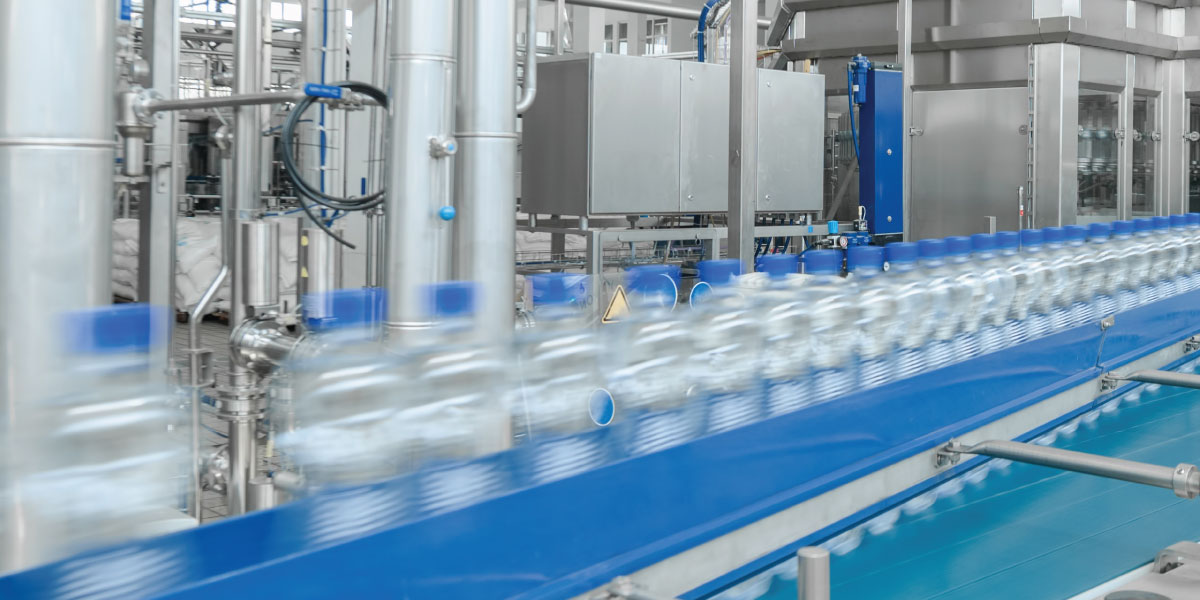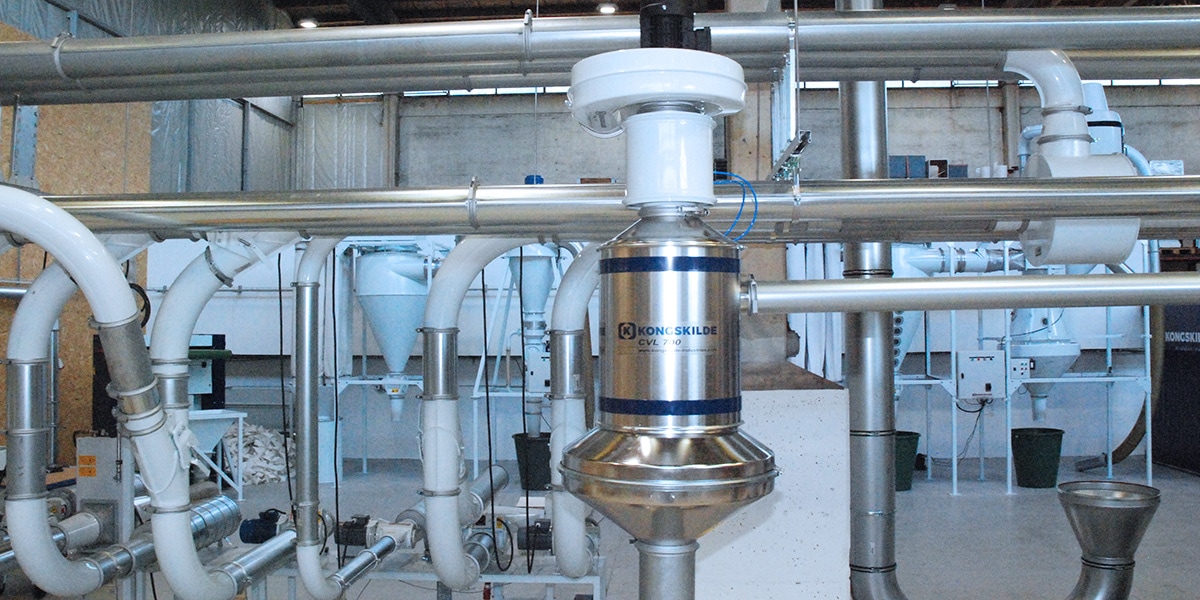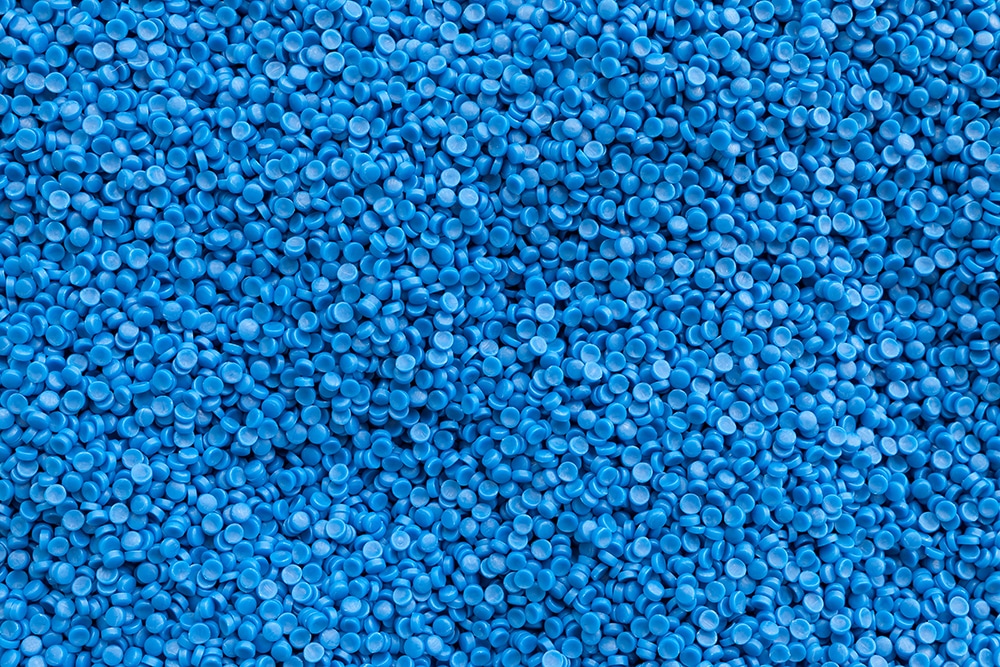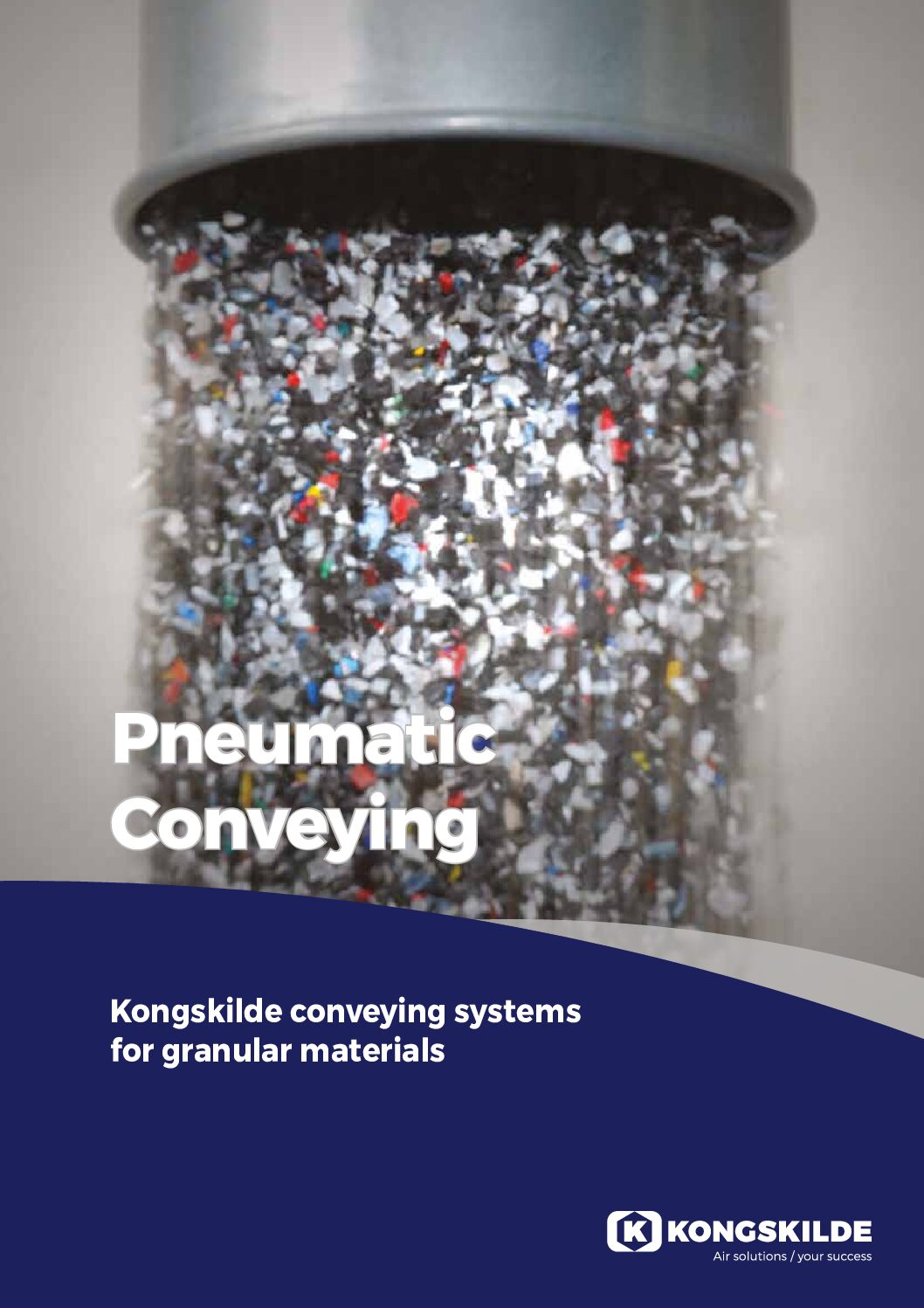

Pneumatic Conveying Systems
Efficient, easy-to-install pneumatic conveying systems that can convey a wide range of materials and components and fit everywhere. For further information contact us or select your solution below.
Finding the right pneumatic conveying system
Kongskilde makes finding the right pneumatic conveying system easy.
Many industries widely use conveyor systems as they offer a cost-effective and material-preserving way to handle bulk materials. Numerous types of conveying systems are available, tailored to the specific requirements of different industries. Pneumatic handling systems, designed for particles ranging from small granules to pellets, are particularly practical for industrial applications in construction and technology.
System Structure and Functionality
Pneumatic conveying systems transfer the bulk materials via a pipeline. Common components of the system are a material introduction point, piping, a receiving point, and an airflow movement device, but the specific nature and capacity of a system vary from model to model.
The flexibility of pneumatic conveying piping makes it easy to install in existing spaces, as piping can be routed around equipment. Well-designed pneumatic conveyor systems are a practical, economic means of moving materials from point A to point B that prove more effective than alternative mechanical systems.
The pneumatic system is an industrial conveyor system that can run vertically or horizontally along long distances and offers protection against dust emissions to the atmosphere. Maintenance, equipment, and operational costs are lower compared to mechanical conveyor systems.
Pneumatic Conveying Methods
Utilizing air streams, either under pressure or in a vacuum, moves the materials. Three primary categories of pneumatic conveying methods exist: dilute phase, dense phase, and air conveying. These methods function based on specific velocities, pressures, and air-to-product ratios within the system.
Dilute phase conveying is a continuous, high-velocity, low pressure and high air to product loading ratio process. The materials transport through an airstream velocity, facilitated by either pushing or pulling. Compared to mechanical conveyor systems, we lower maintenance, equipment, and operational costs.
Enclosed pneumatic conveyors operate without the conveyed material touching any moving parts. Pneumatic vacuum systems administer a vacuum at the receiving end in order to pull the material through the enclosed piping, whereas pressure systems inject compressed air at the introduction or system inlet in order to push materials through.
Questions?
Get in touch with our world-class customer support and technical specialists.






